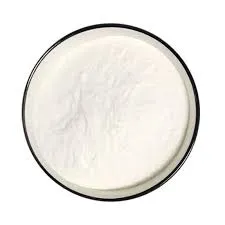
Dec . 26, 2024 10:39 Back to list
Exploring HPMC Solubility Characteristics for Various Applications and Formulations
Understanding HPMC Solubility A Comprehensive Overview
Hydroxypropyl methylcellulose (HPMC) is a multifunctional polymer that has found its application in a wide range of industries, including pharmaceuticals, food, cosmetics, and construction. One of the critical factors in utilizing HPMC effectively is understanding its solubility properties, which are meticulously detailed in various solubility charts. This article aims to provide an insightful overview of HPMC solubility, elucidating its significance and applications in different fields.
What is HPMC?
HPMC is a semi-synthetic polymer derived from cellulose, primarily known for its ability to form clear gels and films in the presence of water. The degree of substitution of hydroxypropyl and methoxy groups in HPMC influences its solubility profile. Generally, HPMC is available in a variety of grades, each with specific properties that cater to different application requirements.
Solubility Characteristics of HPMC
The solubility of HPMC in water is significantly influenced by its molecular weight and the ratio of hydroxypropyl to methoxy groups. Higher molecular weight HPMC tends to be less soluble in cold water, while lower molecular weight variants exhibit better solubility. Additionally, HPMC’s solubility is pH-sensitive, often being more soluble in alkaline conditions compared to acidic environments. The solubility chart for HPMC provides a clear visual representation of these properties, showcasing the different grades of HPMC and their corresponding solubility in water at various temperatures.
Importance of HPMC Solubility in Applications
hpmc solubility chart

1. Pharmaceuticals In the pharmaceutical industry, HPMC is commonly used as a binder, film-forming agent, and controlled-release excipient in drug formulations. The solubility of HPMC plays a vital role in determining the release rate of the active pharmaceutical ingredient (API) from the dosage form. By altering the grade and concentration of HPMC, formulators can tailor the release characteristics of the medication to meet therapeutic needs.
2. Food Industry HPMC serves as a thickening agent and emulsifier in various food products. Its solubility characteristics are crucial for maintaining product texture and stability. For instance, in gluten-free baking, HPMC helps improve the elasticity and moisture retention of dough, demonstrating the importance of understanding its solubility for achieving the desired product quality.
3. Cosmetics In cosmetic formulations, HPMC acts as a stabilizer and a thickening agent. Its ability to dissolve in water and form gels enhances the viscosity of products like lotions and creams, providing a desirable texture and ease of application.
4. Construction HPMC is also utilized in water-retaining compounds, such as cement and plaster. Its solubility affects the workability and adhesion of these materials. A better understanding of its solubility can lead to more efficient mixtures and improved construction materials.
Conclusion
The solubility of HPMC is a fundamental aspect that significantly impacts its functionality across various industries. The HPMC solubility chart serves as a vital tool for researchers, formulators, and manufacturers, allowing them to select the appropriate grade of HPMC based on specific application needs. By understanding HPMC's solubility properties, industries can enhance product formulations, leading to improved quality and performance. As research continues and new grades of HPMC are developed, the ongoing exploration of solubility characteristics will undoubtedly pave the way for innovative applications and solutions.
-
tile-bonding-additives-for-stronger-bonds
NewsAug.22,2025
-
construction-grade-rdp-for-wholesale-needs
NewsAug.22,2025
-
trusted-wholesale-hec-partners
NewsAug.22,2025
-
hec-solutions-for-industrial-excellence
NewsAug.22,2025
-
construction-additives-need-hpmc-essentials
NewsAug.22,2025
-
hpmc-versatile-cellulose-ether-for-industries
NewsAug.22,2025







